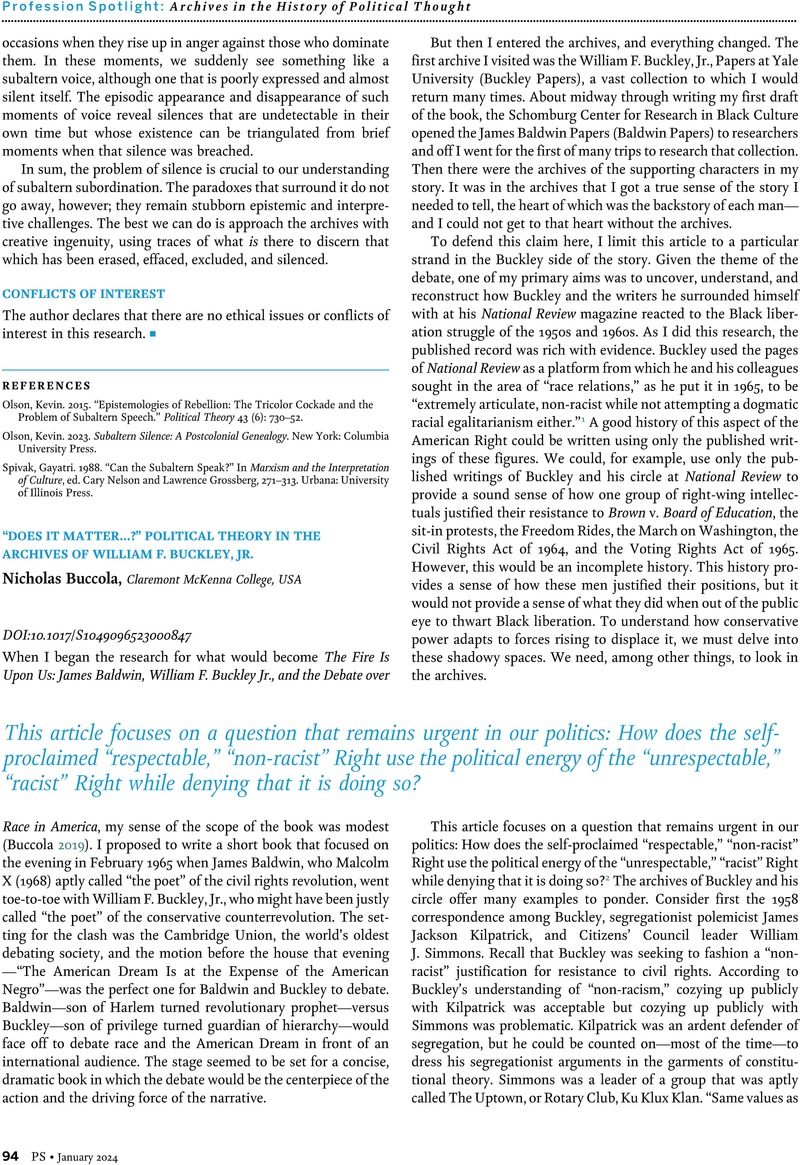No CrossRef data available.
Article contents
“Does it Matter…?” Political Theory in the Archives of William F. Buckley, Jr.
Published online by Cambridge University Press: 29 December 2023
Abstract

- Type
- Archives in the History of Political Thought and Beyond
- Information
- Copyright
- © The Author(s), 2023. Published by Cambridge University Press on behalf of American Political Science Association


